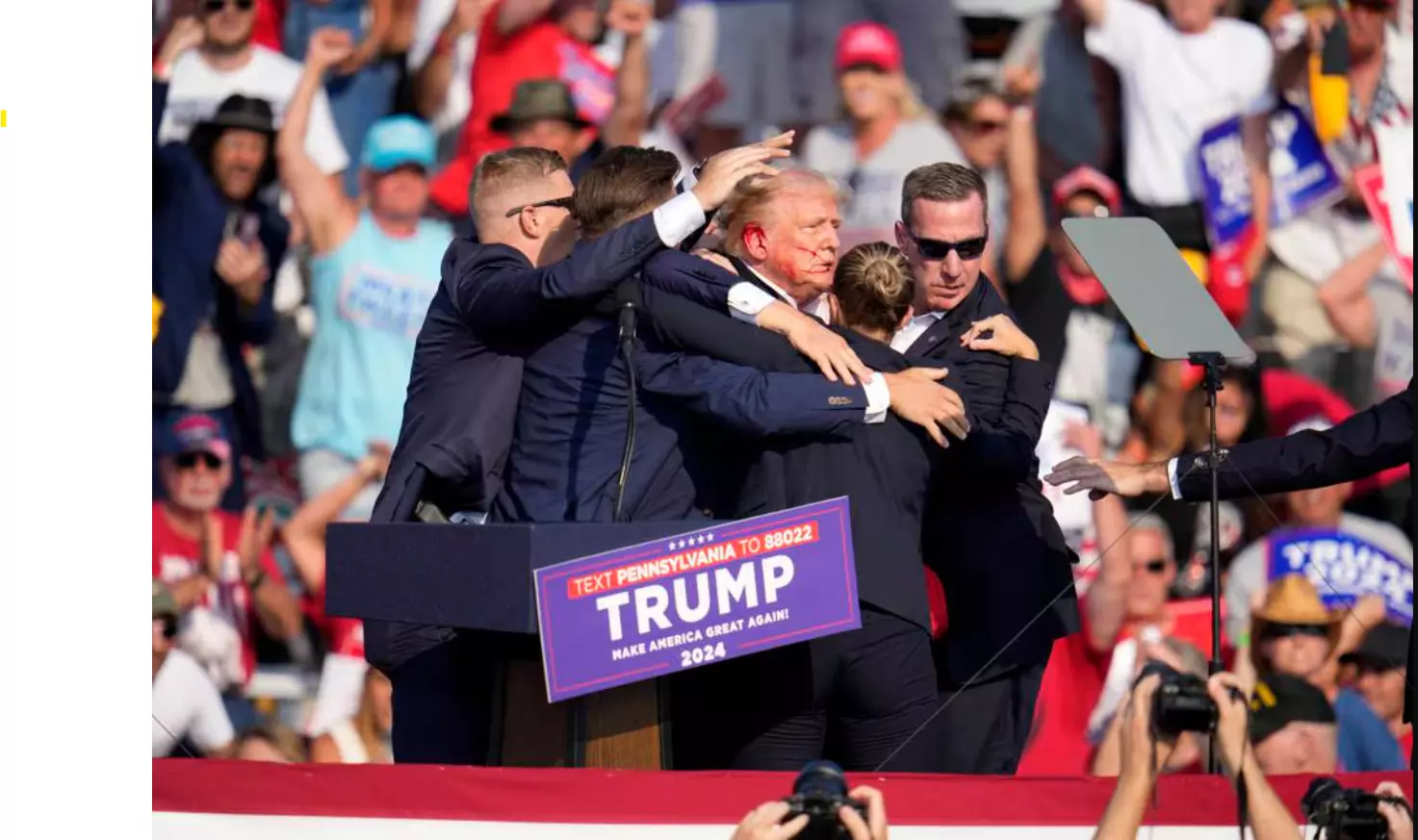Unheeded lessons
The narrow escape of Donald Trump from an assassination attempt in Pennsylvania raises serious questions about security lapses, and indicates that lessons have not been learnt from the past incidents

Republican Presidential candidate Donald Trump providentially escaped an assassination attempt while attending a party gathering in Butler, Pennsylvania, on July 13. This sensational incident is, obviously, making world headlines. It also throws up several questions on the US Secret Service’s mandate to protect high-profile VVIPs. So, what are the glaring loopholes that call for close scrutiny of this assassination bid?
If Trump had not instinctively ducked at the right moment, he could have paid with his life. Luckily, because he evaded at this critical juncture, he escaped with only an abrasion or nick on his ear. A pertinent question that is being asked in the aftermath of the attempted assassination is how a sniper gained access to a rooftop approximately 150 meters from Trump’s position at the rostrum while he was addressing the rally. Crucially, the potential assassin’s location was outside the security periphery, apparently raising questions about the size of the perimeter and the efforts to sweep (anti-sabotage mandatory checks) and secure the American Glass Research Building, allowing easy access to the shooter to the rooftop.
Here, it will not be out of context to mention about another similar assassination attempt targeting the then Indian President Giani Zail Singh and Prime Minister Rajiv Gandhi at Raj Ghat, New Delhi, on October 2, 1986. In this specific incident, the sweeping or thorough check of the locale within the Raj Ghat trees and bushes was believed by professionals to have not been carried out properly. This lack of oversight allowed a terrorist to gain access to the top of a tree and succeed in firing several shots through his makeshift country-made weapon from his hideout in an obvious attempt to harm India’s topmost leaders.
Fortunately, again, one of the bullets barely touched the body of one VVIP, who was thus safe. Here again, there was a complete absence of error-free physical and technical checks of the site to be visited by such leading dignitaries who were highly vulnerable due to real-time threats from various terror groups then active in India. We notice a visible professional lapse on the part of the security professionals who perhaps did their job in a slipshod manner, not making the area sterile and hence exposing the VVIPs at a convenient range of the terrorist. Similar lapses perhaps hold good the for Trump assassination bid.
Now, reverting to the case of Trump, that a sensation has been created in the wake of the incident, President Joe Biden has directed US Secret Service Director Kimberly Cheatle to review all security measures for the Republican National Convention. Orders have also been issued to undertake an independent review of the national security rally to assess exactly what happened. These are afterthoughts.
Could not the highly trained Secret Service agents prevent this occurrence? What was the intelligence machinery doing? The vulnerability of such highly placed VIPs must be well-known and anticipated in advance. Was an assessment or intelligence appreciation not undertaken specifically for Trump’s physical security?
It is also perhaps time to take a few lessons from the assassination of former Japanese Prime Minister Shinzo Abe in Nara City, where the security failed abysmally, and this case is not very old. As a close ally, it is safely presumed that the US agencies carried out a case study of Abe’s assassination. If so, then how come the lapses were allowed to occur in the attempt on Trump’s life? Obviously, the errors were glaring, and lessons were not learned.
There are many other relevant cases when assassination attempts were made on VVIPs’ lives. Some proved fatal, and some did not. Former Prime Minister Indira Gandhi, former Egyptian President Anwar Sadat, former Indian Prime Minister Rajiv Gandhi (the famous Colombo incident of 1987 when a sailor hit him with the butt of a gun), former Israeli Prime Minister Yitzhak Rabin, and many more. A close study of these cases points out that the assassins and plotters did their homework very well and were perhaps far ahead of the security experts in thinking and executing their plans with clockwise precision. Such assassinations or attempts are nothing new, as we have seen from the annals of history. Abraham Lincoln, John Kennedy, his brother Robert Kennedy, Martin Luther King, Ronald Reagan, Liaquat Ali Khan, Benazir Bhutto, and many more are cases for ready reference.
In this world of advanced science and technology, high-tech intelligence, and advanced toolkits, it appears professionally imperative for all VVIP security agencies worldwide to do fresh brainstorming to try and grapple with containing the ongoing problem of assassinations to make the world geopolitically safer and more secure.
The writer is a retired IPS officer, Adviser NatStrat, and a former National Security Advisor in Mauritius. Views expressed are personal



